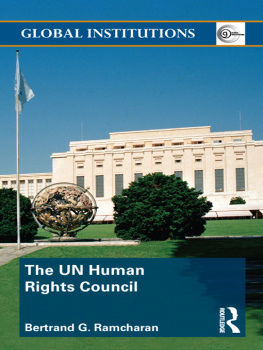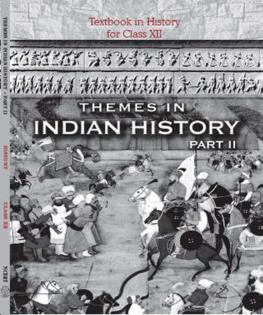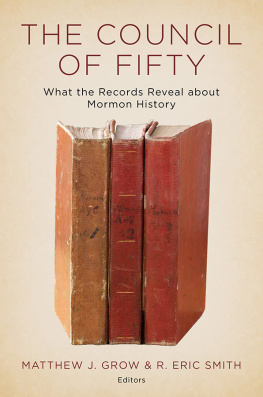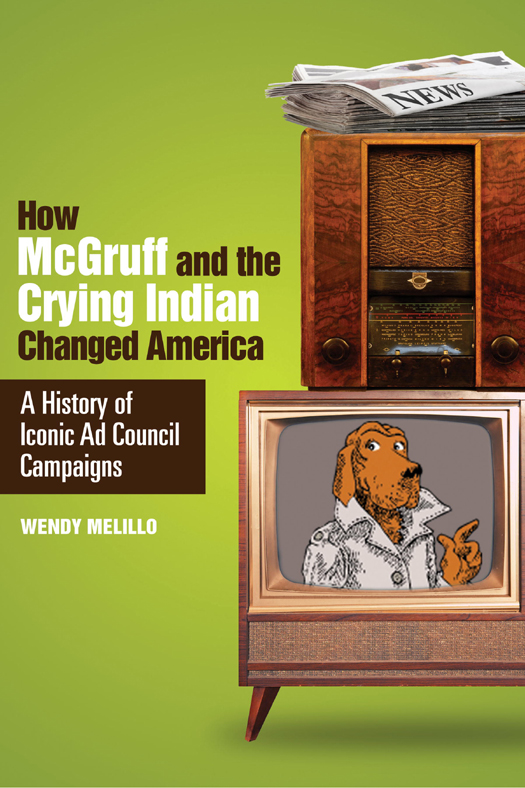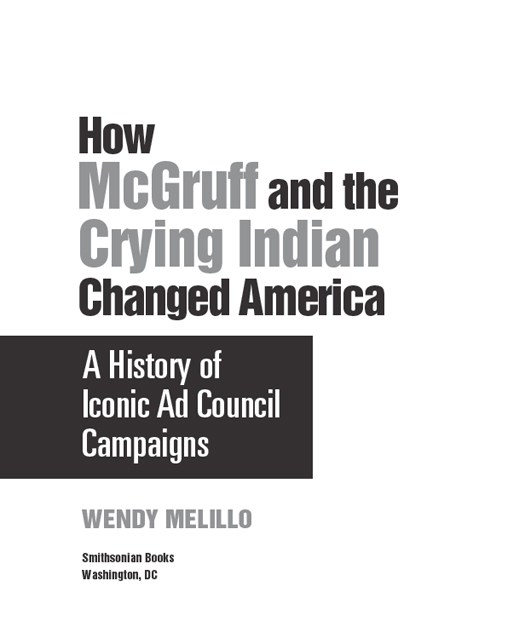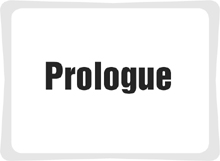Text 2013 by Wendy Melillo
All rights reserved. No part of this publication may be reproduced or transmitted in any form or by any means, electronic or mechanical, including photocopying, recording, or information storage or retrieval system, without permission in writing from the publishers.
Published by Smithsonian Books
Director: Carolyn Gleason
Production Editor: Christina Wiginton
Editorial Assistants: Jane Gardner and Ashley Montague
Editor: Duke Johns
Designer: Brian Barth
Library of Congress Cataloging-in-Publication Data
Melillo, Wendy.
How McGruff and the Crying Indian Changed America : a history of iconic Ad Council campaigns / Wendy Melillo.
pages. cm.
Includes bibliographical references.
eISBN: 978-1-58834-394-9
1. Advertising, Public serviceUnited StatesHistory.
2. Advertising CouncilHistory. I. Title.
HF5827.84.M45 2013
659.1936173dc23 2013013666
For permission to reproduce illustrations appearing in this book, please correspond directly with the owners of the works, as listed in the individual captions. Smithsonian Books does not retain reproduction rights for these images individually, or maintain a file of addresses for sources.
v3.1
A Brilliant Public Relations Move
A dvertising, publishing, and broadcasting played key roles on the American home front during World War II. Their service would prove vital to the war effort, while birthing the organization that would popularize a legendary new media form: public service advertising.
It began in Washington, D.C., on February 5, 1942. With the nation at war, industry leaders met with federal government officials to ask a single question: how could they help their country following the Japanese attack on Pearl Harbor?
Seated in a room at the Social Security Board Building, Donald Nelson, then head of the War Production Board in President Franklin Delano Roosevelts administration and a former Sears, Roebuck and Co. executive, spelled out exactly how the ad industry could motivate the private sector to aid the war effort. Just as the manufacturing tools of the nation are going to be converted to the production of war equipment, the tools of mass education should be converted to the dissemination of war information, Nelson told the industry leaders. Mobilize your organizations and your forces behind the program. Go out and do the job with Yankee ingenuity.
Americas communications industry would respond with more than just Yankee ingenuity. By creating the Advertising Council, incorporated February 18, 1942, the industry would use the power of advertising to unify an isolationist American public against a common enemy. To tie the advertising effort more closely to the hostilities with Japan and Germany, industry leaders would change the name to the War Advertising Council on May 28, 1943. This organization, which represented a close partnership forged between business and government, would mobilize the nations citizens to buy war bonds, plant victory gardens, fight forest fires, andin the case of womentake tough jobs once held by soldiers.
When it dropped the word war from its name after the fighting ended, it would continue to have a profound effect on American society. Its legacy of changing consumer attitudes about seat belts, pollution, education, crime, and drunk drivingto name a few of the many societal issues it has tackledhas proven its patriotism. The Ad Council aims to serve the highest goals of government by protecting the nations people and resources.
The councils storied public service campaigns created on behalf of clients over its seventy-one-year history are well documented. Efforts for the United Negro College Fund as well as its cultural icons such as Smokey Bear, Womanpower, the Crying Indian, and McGruff the Crime Dog have all changed American perceptions and behavior in memorable ways. Its campaigns have contributed to saving an estimated 14,000 lives each year from vehicular deaths, helped reduce litter by 88 percent, and motivated more than 20 million Americans to join neighborhood watch groups. As Ad Council president and CEO Peggy Conlon sees it, these achievements represent an endowment the advertising industry has awarded to Americans. The Ad Council is advertisings gift to America, she frequently says.
The way Americans think about social problems and how these problems should be solved has been directly influenced by the messages in Ad Council campaigns. To solve social problems, the campaigns use commercial advertising methods to frame issues with the intention of altering public opinion, changing behavior, and motivating citizen involvement in beneficial causes. Media companies donate more than $1 billion a year in free advertising time and space to Ad Council messagesmaking it the equivalent of one of the top ten advertisers in the United States. The council receives about thirty inquiries a month from organizations seeking campaigns. About two to five groups file applications each year.
From 1942 to 2012 the Ad Council created 423 separate campaigns, according to the Ad Council Archives at the University of Illinois. The topics covered have included efforts devoted to polio, the Peace Corps, seat belts featuring the Vince and Larry crash dummies, and drunk driving.
What is less well known is that the Ad Councils objective has never been solely to improve society. The councils public service role has also been a remarkably powerful public relations tool that has been wielded by the advertising industry since the councils birth. Its creation was a brilliant public relations move that helped the industry ward off attacks from consumer groups claiming that advertising unfairly lured people into buying goods and services they didnt need, and that fended off unwanted federal regulation. Its access to top government officials through its Washington, D.C., conference, now held once during a presidential term, has given it significant influence in shaping public opinion through campaigns that further the governments domestic and foreign policy goals.
Most Ad Council campaigns have been structured to focus only on the individual actions people can take to solve complex societal problems. This approach raises a broader question about how these campaigns are perceived by the public. If the focus is solely on the individual, does the overall effect create the impression that individuals are exclusively responsible for solving the nations more difficult issues? This approach seems to ignore the role of other important actors such as corporations and government.
Although he has not studied this particular issue, Todd Gitlin, a professor of journalism and sociology at Columbia University who has written a series of books about the impact of media on American society and culture, thinks its fair to make the following supposition: I think it is safe to say, but this is surmise, that these commercials reinforce the propensity that readily exists in our society to reduce social problems to personal challenges.


